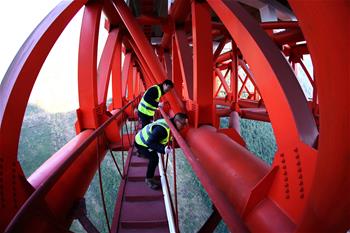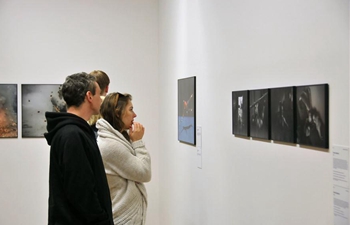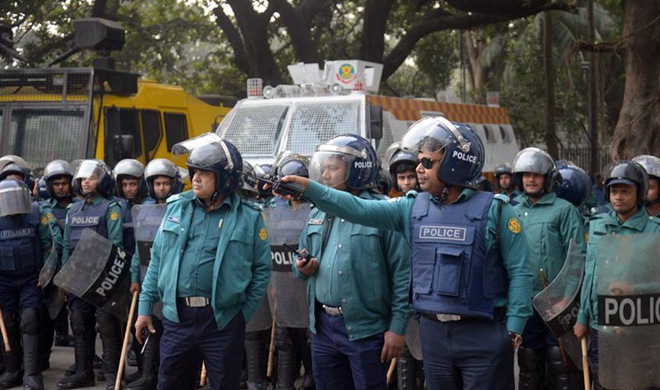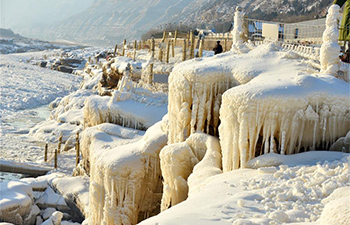LANZHOU, Jan. 18 (Xinhua) -- The mating calls of a female snow leopard are causing worry for staff at a wildlife rehabilitation center in northwestern China.
"It makes growling sounds all day and night, calling for a mate," said Maltsen Guli, who works at the center in Aksay Kazak Autonomous County, Gansu Province. The center was established in 2013 to care for sick and injured wild animals and has taken in over 200 animals.
In December 2014, the then one-year-old female snow leopard was found by a herder and taken to the center, where it has been cared for ever since.
"It was very weak and bony when it was found. It may been left behind when its mother was attacking sheep in the mountains," said Li Zhilong, assistant engineer at the center
Li said there are no snow leopards in zoos in nearby Jiuquan or the provincial capital Lanzhou. They are now contacting zoos in Qinghai and Xinjiang to find a mate for the animal.
Snow leopards are a Class A protected animal in China and are classified as "vulnerable" by the International Union for Conservation of Nature. They live in the Himalayas in central and south Asia at an altitude of 2,500 to 4,500 meters. The number of snow leopards is believed to be around 7,000 to 11,000, with about 60 percent living in China.
Mating season for the snow leopard is from January till mid-March.
"This snow leopard had not yet learned how to live in the wild. We have tried to train it to catch prey, but it still does not have enough skills to survive by itself," said Li.
Guli has been the animal's primary caretaker while it has been at the center.
"Once, when I was closing the cage, it leapt from the ground as if it wanted to attack me. Instead, it held onto one of my legs like a kitten. I lifted my leg and it just let go," she said.
However, Guli knows it is not a good thing for the animal to be mild. She has tried to train it to prey on live animals and jump from high places, skills it will need to survive on its own.
The wildlife center is located at 1,650 meters above sea level, where temperature can reach up to 38 degrees celsius in summer, not an ideal environment for a snow leopard. Every summer, staff spray water into the animal's cage daily to cool it down.
Zhao Xiang, director of the Sanjiangyuan project with Beijing Shanshui Conservation Center, said the wild snow leopard population is threatened by climate change, habitat destruction and human activity.

















